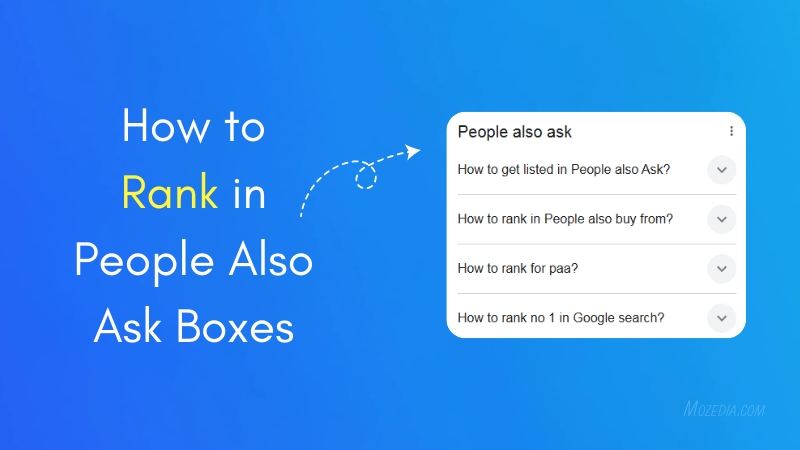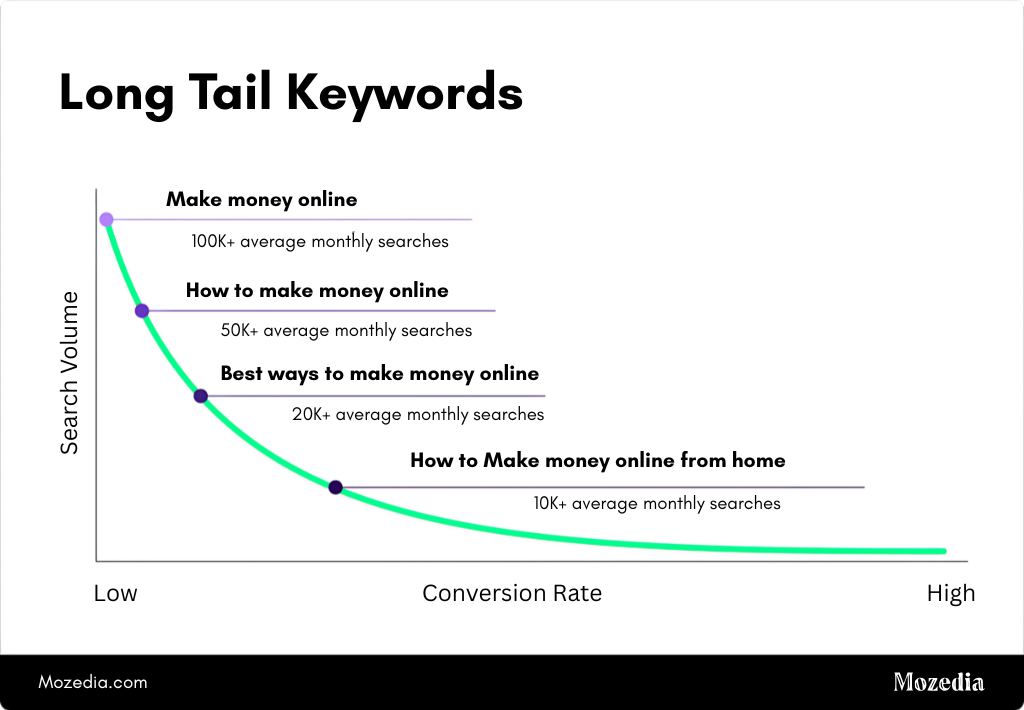Are you wondering how to rank in Google’s People Also Ask (PAA) boxes in 2025?
You’re not alone.
PAA boxes are now one of the most clicked SERP features, stealing traffic from traditional organic results. And if you’re not optimizing for them, you’re leaving clicks on the table.
In this guide, I’ll walk you through everything I’ve learned from optimizing over 200+ blog posts, tracking SERP features across multiple niches, and using tools like Semrush, Ahrefs, and Google Search Console.

Ranking in Google’s People Also Ask (PAA) boxes is one of the smartest ways to gain visibility, drive clicks, and showcase authority in search results — especially in 2025.
With Google’s evolving AI-powered SERPs, owning a PAA spot means you’re answering searchers’ real questions better than your competitors.
If you’re looking to boost your organic traffic, improve your authority, and dominate SERPs, then you can’t ignore the People Also Ask (PAA) box in Google search results.
Let’s dive in.
- What Are “People Also Ask” Boxes?
- Why Ranking in PAA Matters More in 2025
- How Google Selects Content for PAA in 2025
- How to Rank in People Also Ask Boxes (Expert Tips 2025)
- 1. Identify PAA Questions in Your Niche
- 2. Answer Questions Using the Q&A Format
- 3. Use Structured Data (FAQ Schema)
- 4. Target Long-Tail & Intent-Based Keywords
- 5. Add First-Hand Experience
- 6. Write Better Answers Than the Competitors
- 7. Keep Updating Your Content
What Are “People Also Ask” Boxes?
“People Also Ask” (PAA) boxes are interactive snippets in Google Search that display related questions to the user’s query.
When a user clicks on a question, it expands to reveal a short answer, often pulled directly from a webpage — with a link to that page.
Example:
Search: How to Rank in Google Search?
People also ask (PAA) Box:
• How do I increase my Google search ranking?
• How to rank 1 in Google search?
• How do I get on top of Google search?
• How to rank in People also Ask?
These boxes continue to expand as users click more, making them endless sources of traffic — if you can earn a spot.
Why Ranking in PAA Matters More in 2025
In 2025, PAA boxes appear in over 65% of all search queries (Source: Semrush Sensor).
And here’s why they matter:
- Higher CTR: PAA boxes show up high on page 1 — often above the fold.
- Voice Search Friendly: Google often pulls voice answers from PAA results.
- Position Zero Shortcut: You don’t need to rank #1 to appear in PAA — you can rank on page 2 and still grab that spot.
- Topical Authority Boost: Being featured increases your trustworthiness and semantic coverage.
Now let’s talk about how to actually rank in them.
How Google Selects Content for PAA in 2025
Google uses a mix of AI, NLP, and its Helpful Content System to extract answers for PAA. Key factors that influence whether your content gets featured include:
In 2025, Google’s algorithm emphasizes Experience, Expertise, Authoritativeness, and Trustworthiness (E-E-A-T).
PAA answers are often chosen from pages that:
- Answer the question directly and concisely
- Show first-hand experience or expertise
- Are well-structured (with proper HTML tags)
- Come from trusted websites (strong authority signals)
Pro Tip: Google rewrites PAA answers ~40% of the time. Make sure your content is formatted and written to match their preferred snippet style.
Please Note: This content is manually written by humans for educational use. AI is used only for research and formatting.
How to Rank in People Also Ask Boxes (Expert Tips 2025)
To rank in Google’s “people also ask” (PAA) box, focus on creating high-quality content that directly answers common questions related to your topic.
This includes thorough keyword research, crafting concise and informative answers, and structuring your content to make it easily scannable and digestible.
Here’s a PAA-ready content format I’ve personally tested and ranked with:
1. Identify PAA Questions in Your Niche
Use tools like:
- AlsoAsked.com
- AnswerThePublic
- Ahrefs / Semrush
- Google Search itself
Search your main keyword and expand a few PAA boxes. Collect the most relevant questions people are already asking.
Example: If your post is about “SEO for beginners”, PAA boxes may include:
- What is SEO in simple terms?
- How do I start SEO from scratch?
- Is SEO free or paid?
2. Answer Questions Using the Q&A Format
Include clear subheadings (H2/H3) with the exact question as the heading and answer it directly in the first sentence.
Do this:
H2: What is SEO in simple terms?
SEO stands for Search Engine Optimization. It’s the process of improving a website so it ranks higher in search results and attracts more visitors.
Keep answers 40–60 words long, concise, and written in a neutral tone — Google often pulls that as the PAA snippet.
3. Use Structured Data (FAQ Schema)
Mark up your content with FAQ schema to increase chances of getting featured in PAA boxes. Even if Google doesn’t always show schema-rich results, it helps bots better understand your structure.
Example Questions:
- What is SEO in simple terms?
- Is SEO free or paid?
Here’s an example of FAQ Schema markup (JSON-LD format):
<script type="application/ld+json">
{
"@context": "https://schema.org",
"@type": "FAQPage",
"mainEntity": [
{
"@type": "Question",
"name": "What is SEO in simple terms?",
"acceptedAnswer": {
"@type": "Answer",
"text": "SEO stands for Search Engine Optimization. It’s the process of improving a website so it ranks higher in search results and attracts more visitors."
}
},
{
"@type": "Question",
"name": "Is SEO free or paid?",
"acceptedAnswer": {
"@type": "Answer",
"text": "SEO can be both free and paid. You can optimize content and build links organically, or invest in tools and services to speed up results."
}
}
]
}
</script>If you’re on WordPress, tools like Rank Math or Yoast SEO Premium make this super easy.
4. Target Long-Tail & Intent-Based Keywords

Many PAA questions are long-tail queries like:
- “Can I learn SEO without coding?”
- “How much does a blog earn per month?”
Include variations of these in your content, especially as subheadings. Google loves surfacing answers to these intent-rich questions.
5. Add First-Hand Experience
PAA results favor pages that demonstrate experience — not just generic info. Include:
- Screenshots
- Personal results
- Data from your own tests
- Step-by-step tutorials
This satisfies Google’s E-E-A-T (Experience, Expertise, Authoritativeness, Trust) criteria, making your answers more reliable and snippet-worthy.

6. Write Better Answers Than the Competitors
Check the current PAA answers for your target questions. Then ask:
- Can I write a clearer, more complete answer?
- Is the current answer outdated?
- Does it lack images, facts, or examples?
If yes, write a superior version. Google often replaces weaker PAA answers with better ones over time.
7. Keep Updating Your Content
PAA boxes change frequently. Revisit your content every few months to:
- Add new trending questions
- Improve outdated answers
- Add fresh data or experience
- Monitor rankings using tools like Semrush or Google Search Console
Real Example: How Mozedia Ranked in PAA for “Is Blogging Dead?”
When we published “Is Blogging Dead or Still Worth It? (Expert Opinion in 2025)”, we structured each section around actual user questions like:
- Is blogging still profitable in 2025?
- Can you make money from blogging today?
- What’s the future of blogging?
By targeting these questions with concise, expert-backed answers and using FAQ schema, we quickly landed multiple PAA spots.
Bonus Tips
- Use a table of contents so Google can easily navigate your Q&A sections.
- Don’t keyword stuff — keep it natural.
- Embed internal links to other helpful resources.
- Track your snippets using Search Console → Performance → Search Appearance.
Final Thoughts
Ranking in People Also Ask boxes in 2025 isn’t just about luck or writing tons of content. It’s about understanding what users are asking, how Google thinks, and how to deliver the most helpful, trustworthy answer—fast.
Apply the strategies above consistently, and you’ll start seeing your site show up in those golden PAA boxes across multiple queries.
Also check out How passkeys affect SEO in 2025:
Have questions or success stories? Drop them in the comments—or better yet, share this article and tag me. Let’s grow smarter together.



Nice post, sir! Google still drives traffic, but honestly, it’s the age of AI now. Many people just ask ChatGPT directly. Still, SEO tips like this are useful for a lot of creators.
Thanks, Nikhil!
You’re right, AI is changing the game, but SEO tips are still essential for creators. Glad you found them useful!
Absolutely loved this deep dive into PAA optimization! The step-by-step strategies, especially the emphasis on concise answers and structured data, are game-changers.
Thank you so much Ananya! Glad the step-by-step tips clicked — wishing you lots of PAA wins ahead! 😊
Thanks Man, this PAA stuff felt like rocket science before — but you just made it feel like street food: easy, tasty, and everywhere! Loved the tips!
Haha love that! So glad it felt easy and fun — that was the goal! 😄